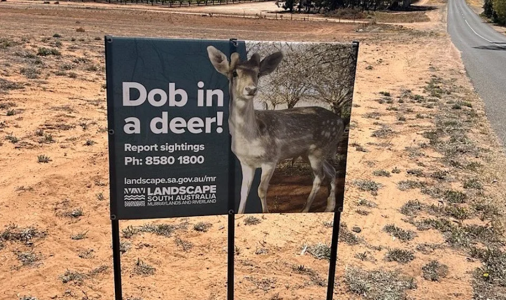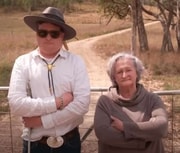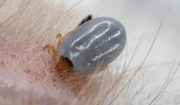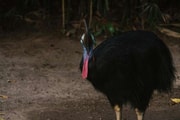Australians face $96 million road menace hiding in plain sight
By
Gian T
- Replies 12
As we travel across the country, a growing threat lurks, unnoticed by many.
This issue is causing a significant environmental impact and extending to our roads, with potentially costly consequences.
The source of the problem is an introduced species that's becoming a serious concern nationwide. Experts are urging action to address the rising danger before it worsens.
Originally brought to Australia in the early 1800s by European settlers, deer were seen as a game species for hunting and a way to make the Australian landscape feel more like the European countryside.
Little did the settlers know that they were introducing a ticking time bomb into an ecosystem not equipped to handle such animals.
With no natural predators to keep their numbers in check, deer populations have exploded across the continent.
Now, experts are sounding the alarm as the activity of these problematic creatures is set to intensify, leading to increased encounters on our roads.
The Centre for Invasive Species Solutions has been monitoring the situation closely, and CEO Shauna Chadlowe has urged residents to report sightings of feral deer.
This data is crucial for land management agencies and communities to take early action and keep deer numbers manageable.
Feral deer's impact is far-reaching. They damage native vegetation and ringbark trees, create wallows, trample undergrowth, and spread weed seeds, all of which threaten the survival of our native flora and fauna.
But the threat doesn't stop there. Deer also pose significant risks to agriculture by damaging crops and fences, leading to substantial economic losses for farmers.
And let's not forget the diseases they can carry, such as chronic wasting disease and tuberculosis, which can spread to native wildlife and livestock.
In terms of complex numbers, the economic toll is staggering. In 2021 alone, feral deer cost the Australian economy approximately $91.3 million, including $69.1 million in agricultural losses.
Public expenditure on control efforts reached $17.8 million, highlighting the ongoing challenge of managing deer populations.
The economic impact also extends to infrastructure, with deer-related motor vehicle collisions causing an estimated $3.3 million in damages and train collisions adding another $1.2 million to the bill.
Dr Annelise Wiebkin, the Centre for Invasive Species Solutions' national deer management Coordinator, points out that extreme weather events push deer into new areas.
To counter their breeding rate, a 35-50 percent reduction in deer numbers per year is needed, which can be achieved through strategic, frequent, and timely efforts.
''Many Australians are not aware that we have feral deer in Australia (almost 40 per cent), so we need to raise the awareness...and encourage more uniform and widespread action,' she said.
'Activity will intensify in coming weeks, so people may see deer more often or even for the first time in a new area. We have a small window of opportunity to track their spread and support control efforts, particularly in areas where feral deer numbers are still low.'
'Feral deer trash and eat native vegetation, ringbark trees, create wallows, trample undergrowth and spread weed seeds, all things that threaten the survival of native flora and fauna.'
With deer already familiar in Victoria, NSW, and Tasmania and spreading to other regions, the risk of vehicle collisions is a concern for all drivers.
Together, we can help mitigate the impact of this invasive species and protect our unique Australian landscape.
 Have you encountered feral deer on your property or the roads? Share your experiences with us and raise awareness about this growing issue. Remember, every report helps build a clearer picture of the problem and aids in developing effective management strategies.
Have you encountered feral deer on your property or the roads? Share your experiences with us and raise awareness about this growing issue. Remember, every report helps build a clearer picture of the problem and aids in developing effective management strategies.
This issue is causing a significant environmental impact and extending to our roads, with potentially costly consequences.
The source of the problem is an introduced species that's becoming a serious concern nationwide. Experts are urging action to address the rising danger before it worsens.
Originally brought to Australia in the early 1800s by European settlers, deer were seen as a game species for hunting and a way to make the Australian landscape feel more like the European countryside.
Little did the settlers know that they were introducing a ticking time bomb into an ecosystem not equipped to handle such animals.
With no natural predators to keep their numbers in check, deer populations have exploded across the continent.
Now, experts are sounding the alarm as the activity of these problematic creatures is set to intensify, leading to increased encounters on our roads.
The Centre for Invasive Species Solutions has been monitoring the situation closely, and CEO Shauna Chadlowe has urged residents to report sightings of feral deer.
This data is crucial for land management agencies and communities to take early action and keep deer numbers manageable.
Feral deer's impact is far-reaching. They damage native vegetation and ringbark trees, create wallows, trample undergrowth, and spread weed seeds, all of which threaten the survival of our native flora and fauna.
But the threat doesn't stop there. Deer also pose significant risks to agriculture by damaging crops and fences, leading to substantial economic losses for farmers.
And let's not forget the diseases they can carry, such as chronic wasting disease and tuberculosis, which can spread to native wildlife and livestock.
In terms of complex numbers, the economic toll is staggering. In 2021 alone, feral deer cost the Australian economy approximately $91.3 million, including $69.1 million in agricultural losses.
Public expenditure on control efforts reached $17.8 million, highlighting the ongoing challenge of managing deer populations.
The economic impact also extends to infrastructure, with deer-related motor vehicle collisions causing an estimated $3.3 million in damages and train collisions adding another $1.2 million to the bill.
Dr Annelise Wiebkin, the Centre for Invasive Species Solutions' national deer management Coordinator, points out that extreme weather events push deer into new areas.
To counter their breeding rate, a 35-50 percent reduction in deer numbers per year is needed, which can be achieved through strategic, frequent, and timely efforts.
''Many Australians are not aware that we have feral deer in Australia (almost 40 per cent), so we need to raise the awareness...and encourage more uniform and widespread action,' she said.
'Activity will intensify in coming weeks, so people may see deer more often or even for the first time in a new area. We have a small window of opportunity to track their spread and support control efforts, particularly in areas where feral deer numbers are still low.'
'Feral deer trash and eat native vegetation, ringbark trees, create wallows, trample undergrowth and spread weed seeds, all things that threaten the survival of native flora and fauna.'
With deer already familiar in Victoria, NSW, and Tasmania and spreading to other regions, the risk of vehicle collisions is a concern for all drivers.
Together, we can help mitigate the impact of this invasive species and protect our unique Australian landscape.
Key Takeaways
- Australians are being urged to report sightings of feral deer as their numbers and impacts intensify across the country.
- Feral deer, introduced in the 1800s for hunting, are causing widespread environmental and agricultural damage.
- The Centre for Invasive Species Solutions highlights the importance of early action in effectively managing the growing deer population.
- The economic impact of feral deer on Australia, including agricultural losses and costs related to vehicle collisions, was about $96 million in 2021.








